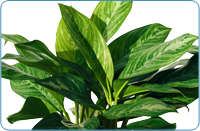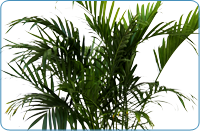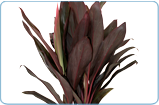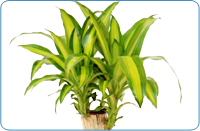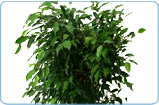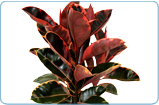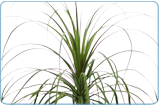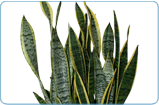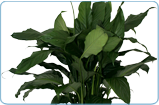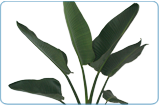Light
It is best to keep this Ficus in an area where it will not receive a lot of DIRECT sunlight as it thrives better in shaded areas where it receives indirect light.
Placement
Patio, Livingroom, Breakfast nook
Water Habits
Allow the soil to dry between watering for the Ficus Benjamina. If your plant is receiving low amounts of light you should water it less frequently.
Temperature
Ideal Temperature for Ficus Benjamin: 62-80°F (17-27°C) Min: 40°F (4°C)
Toxins Removed
Formaldehyde
Did You Know ?
The Ficus Benjamina is native to Australia and Southeast Asia and is the official tree of Bangkok, Thailand. The Benjamina is sometimes referred to as the ‘weeping fig’ because during certain times of the year the plant will shed some of its leaves, or have a “crying fit”. It does this in order to adapt to changes in the temperature or to the amount of light the plant might be receiving. Once the leaves have been dropped the Weeping Fig will grow new leaves that are better adapted to its new environment.






